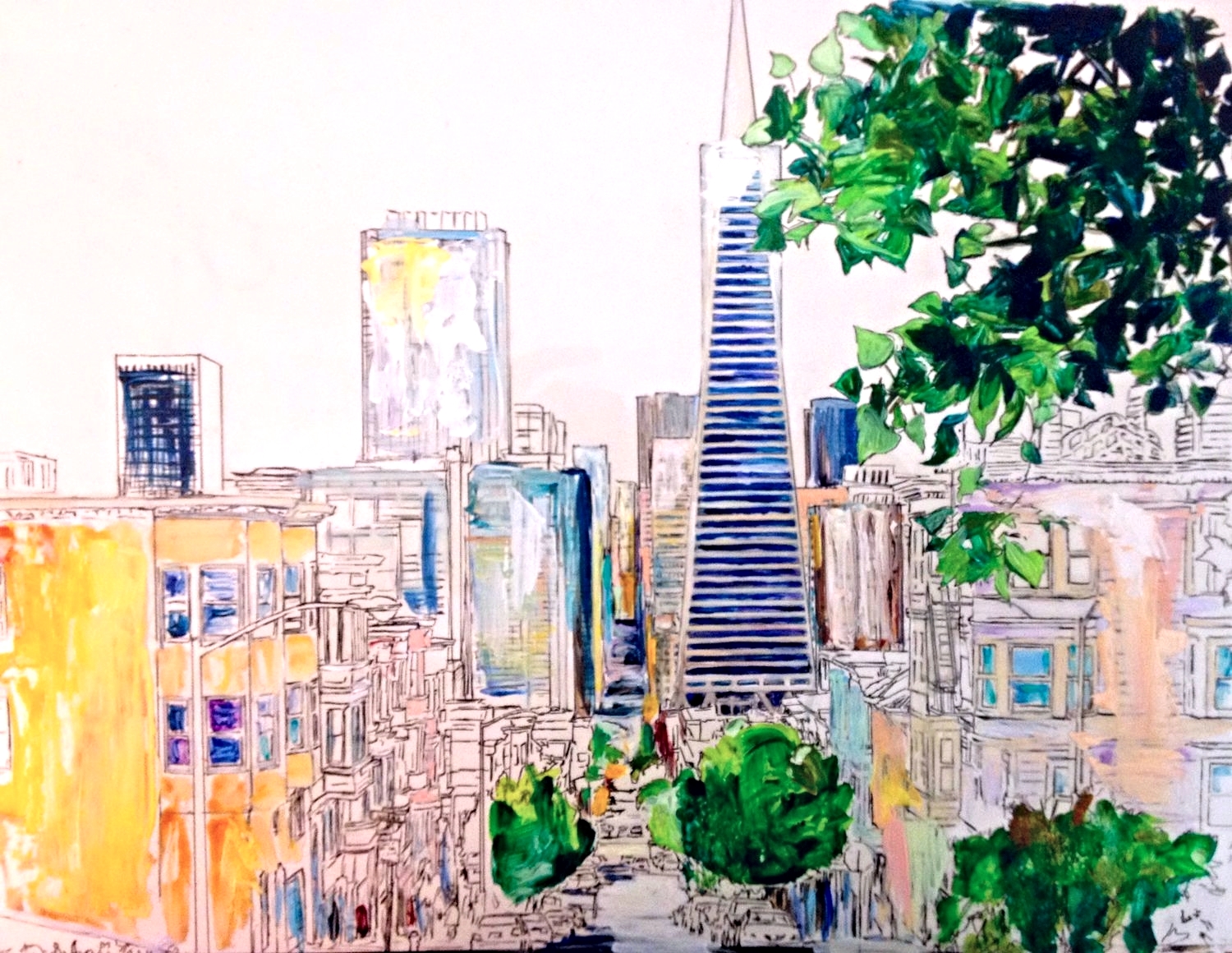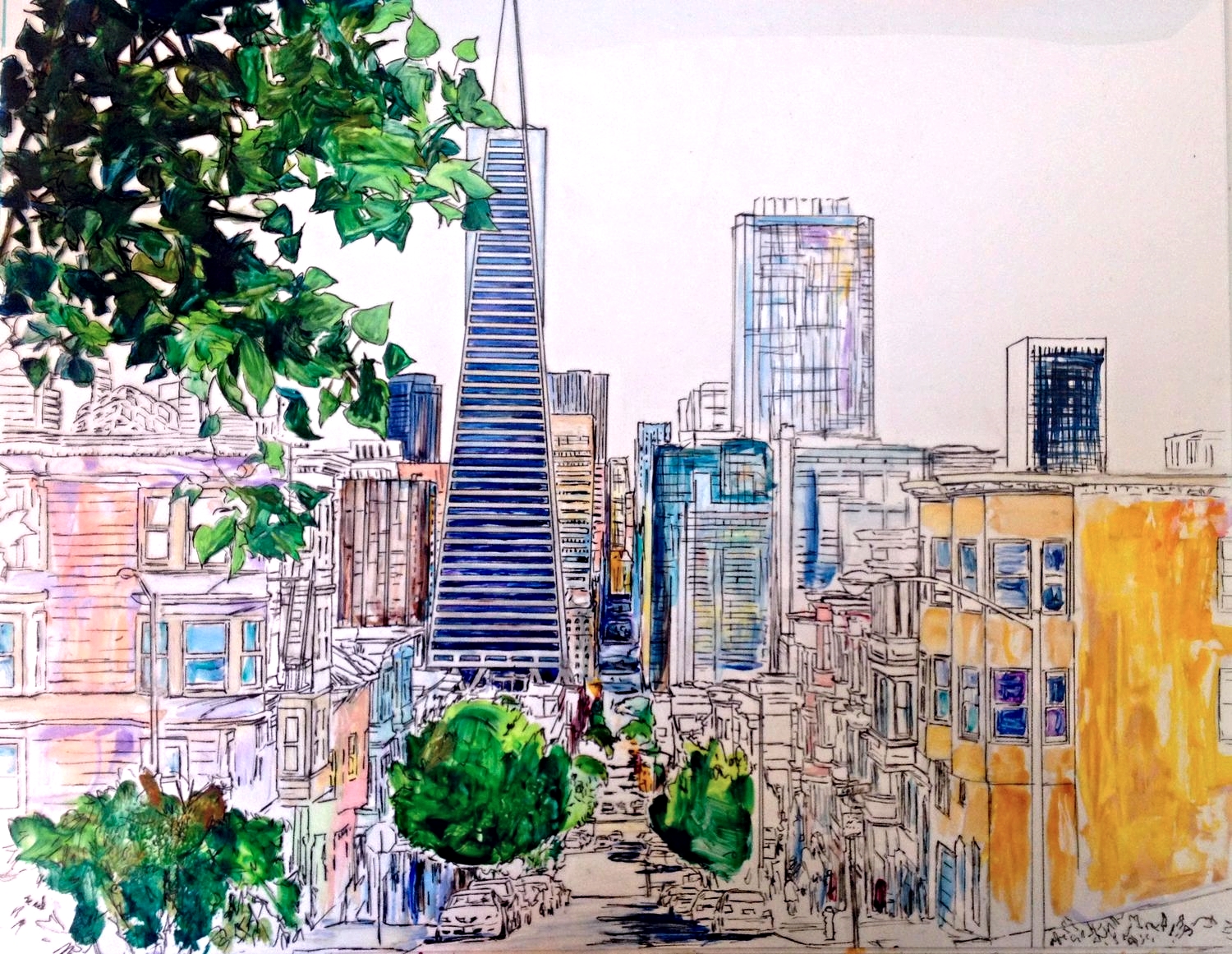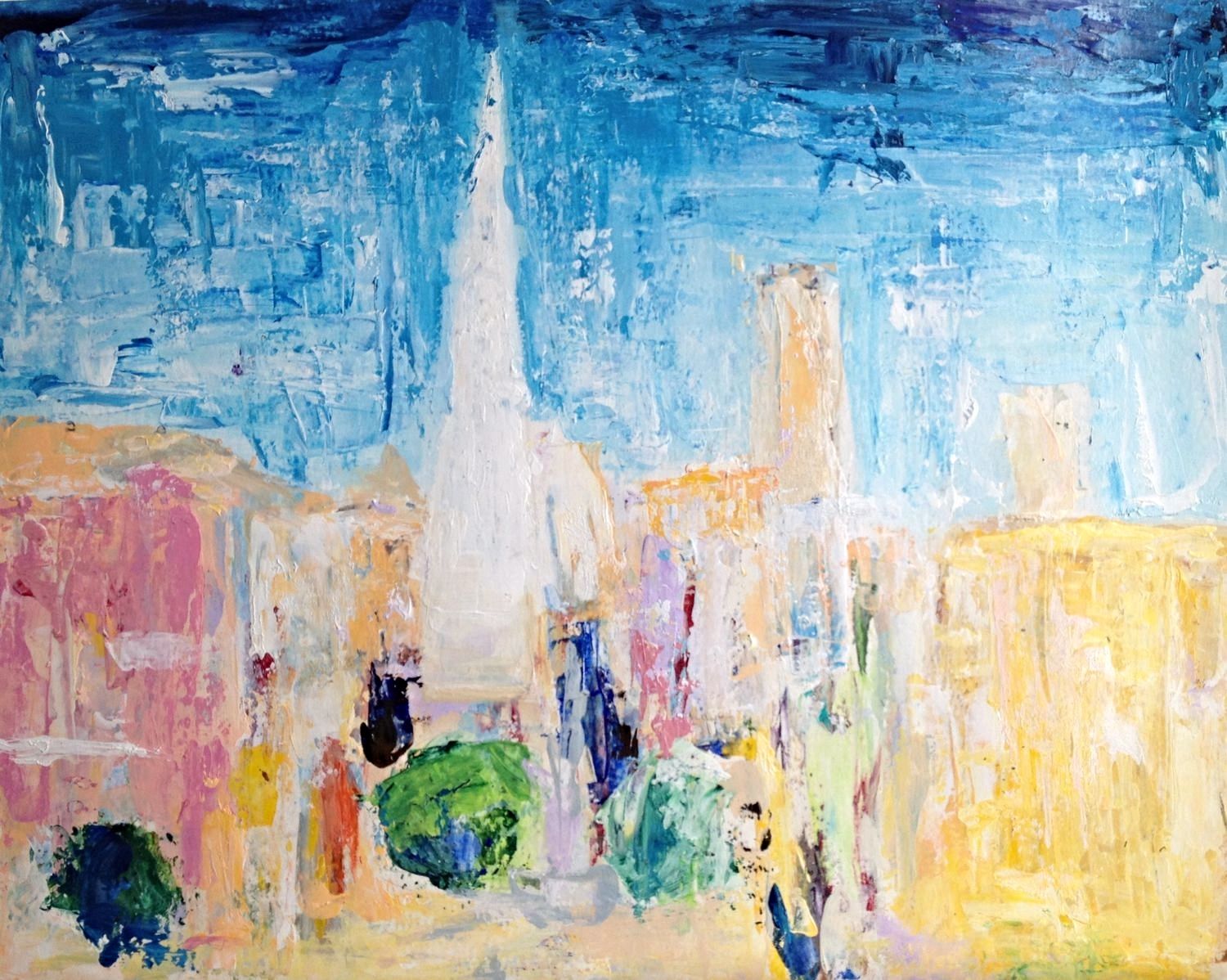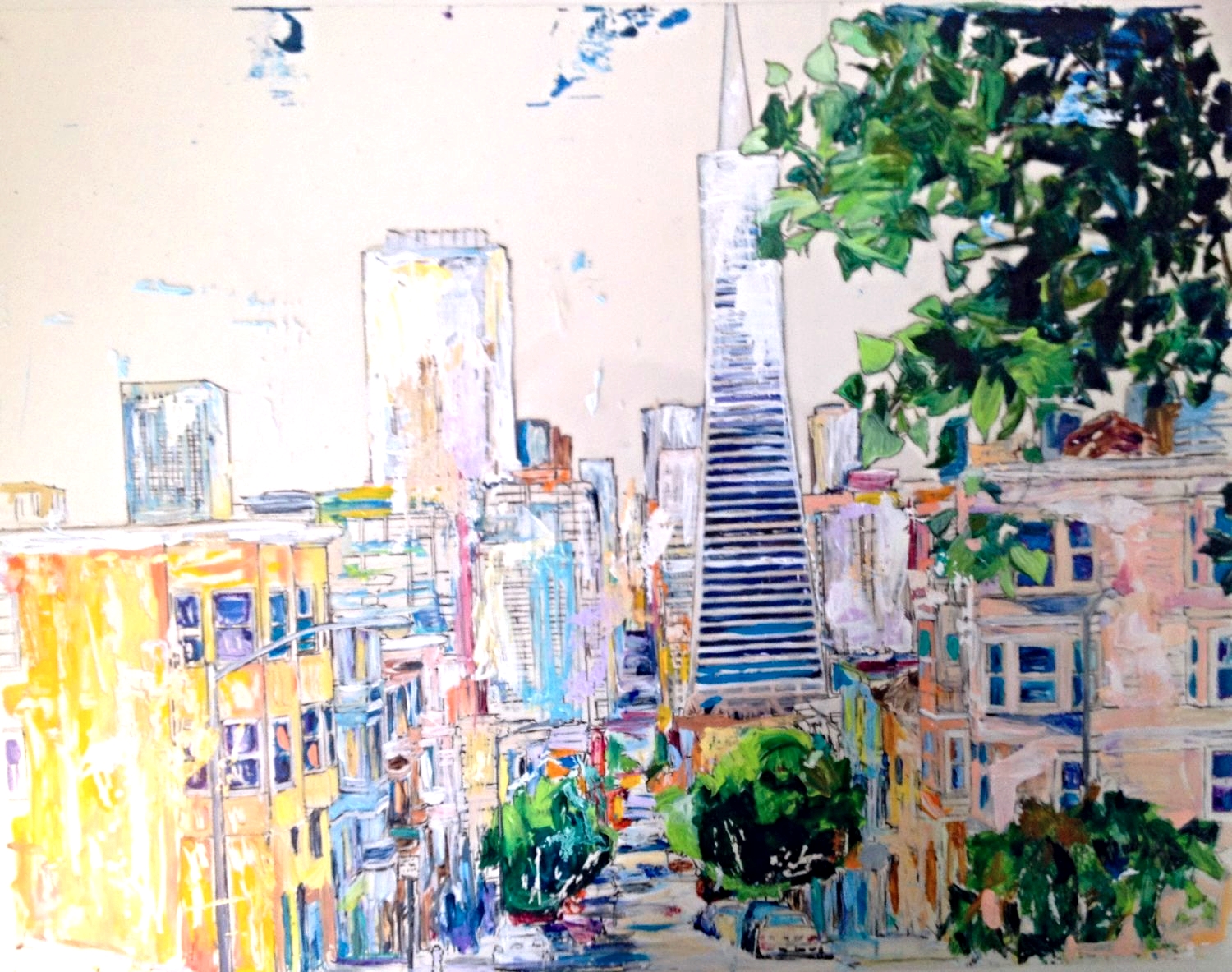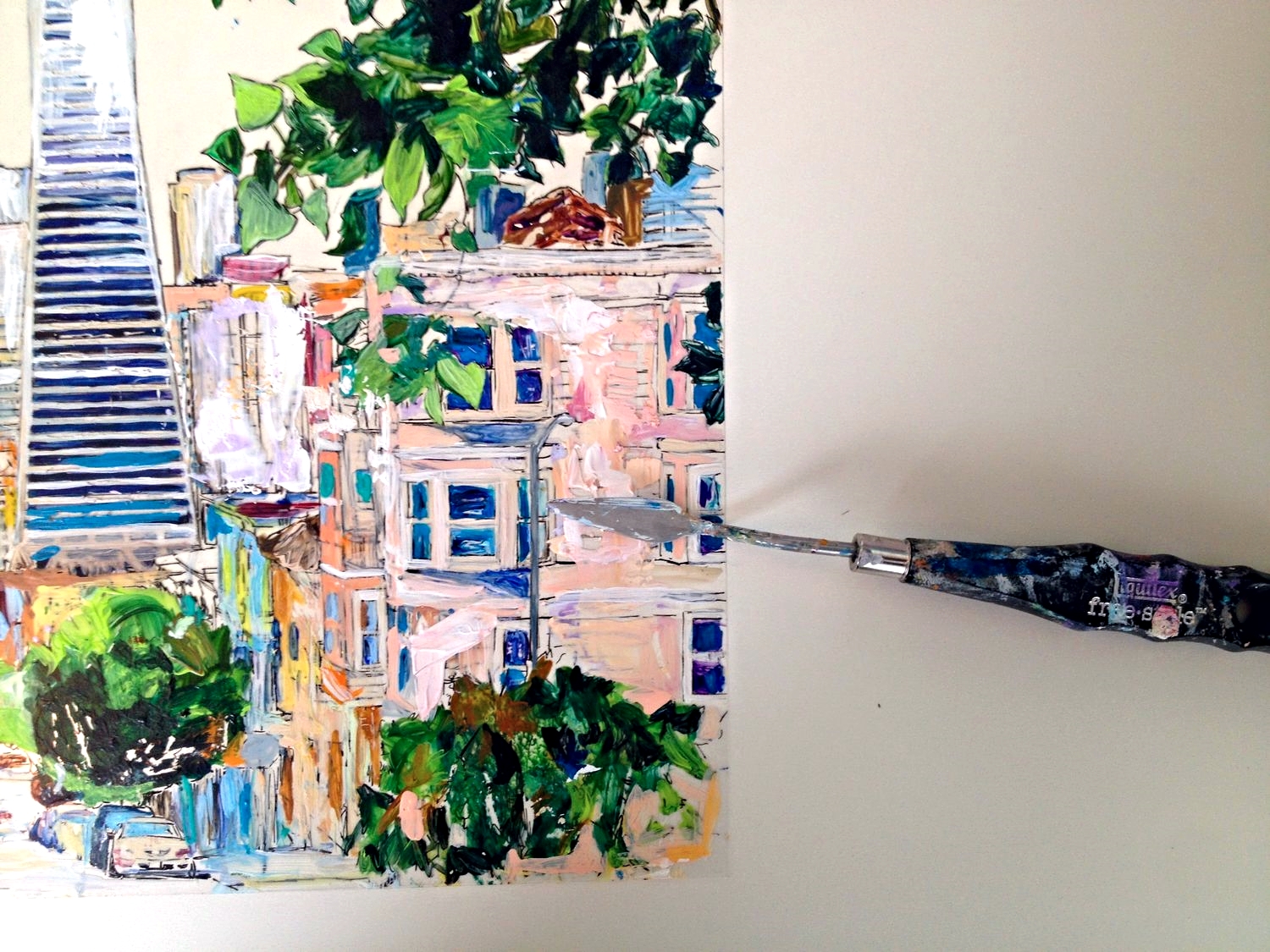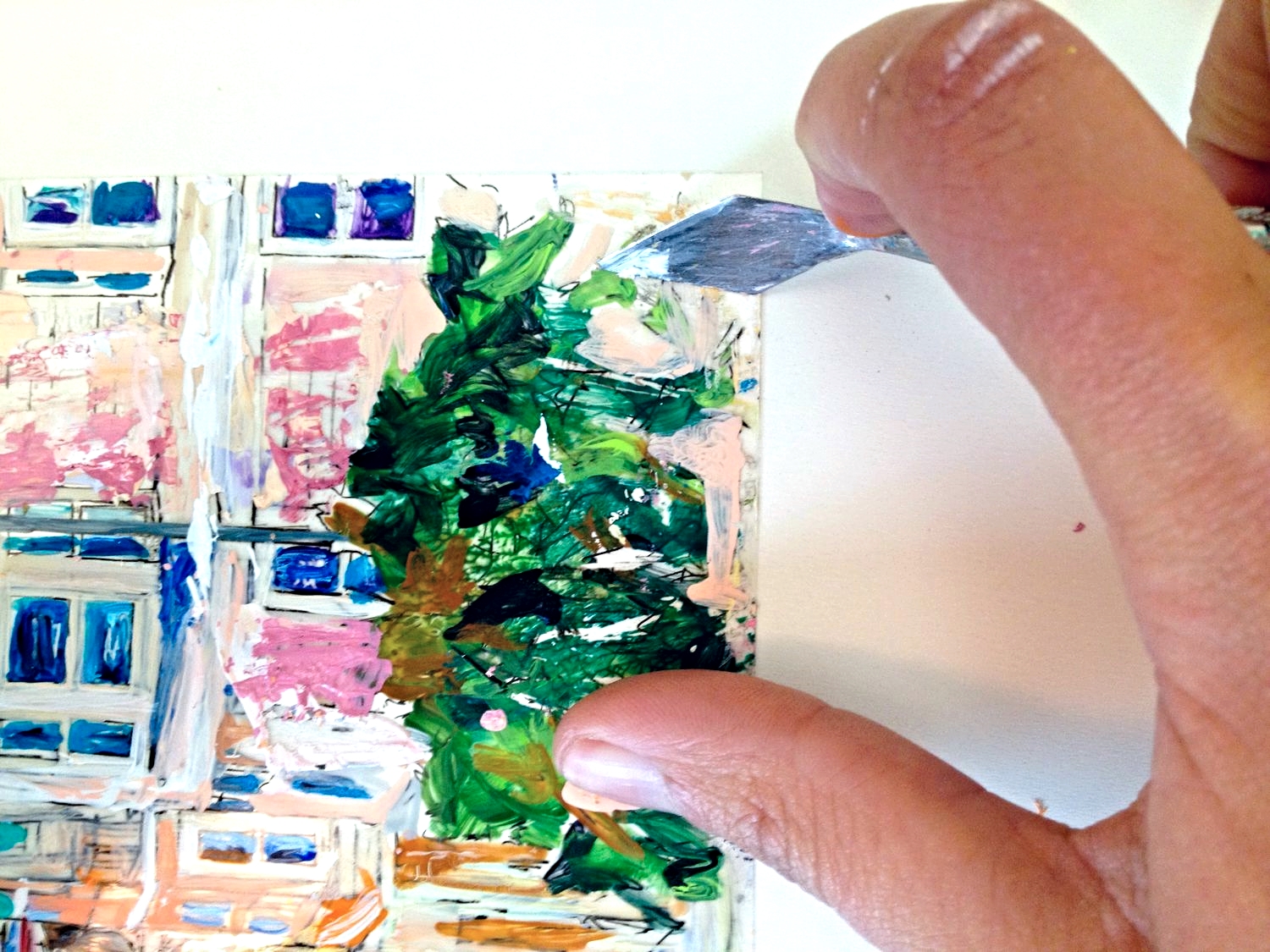Starting a blank canvas can be refreshing. It is sometimes a great feeling. It means that you have just finished yet another painting, and you have therefore accomplished something. Yet staring at a blank canvas can also be intimidating, frustrating, and self-deprecating.
Last week I went to my studio after an almost weeklong absence that included moving apartments and working as a production assistant on a film. I was excited to paint. I miss my studio when I am gone for more than two days. I would not waste time staring at a blank canvas because I knew exactly how I wanted my new painting to look. It would be a girl sitting in the back seat of a car painted in black and white. I had been thinking of this image for a while. Yet then I hesitated, thinking it might look better in a different palette. I thought about the chrome filter on my iPhone camera app, a Degas painting I had seen years ago at Musee d’Orsay, and this painting of a woman in a tub that I saw at the Fog Fair. I want to paint like that, not in black and white.
Le tub by Edgar Degas (1886)
I wanted to paint, but I was scared of making the wrong move. I was scared I will waste time and money and, even worse, the outcome will be bad. I did the worse thing possible: nothing. I couldn't paint. I needed time to think about it.
This is one of the frustrating and time consuming things about being an artist, especially a painter. I feel like I have been painting long enough that I shouldn't have such hesitancy and doubt about my work. But I do. I tell people that I am an artist when people ask me what I do. It makes me feel like I am professional, regardless of how many or how few sales I have had this month. It is my title. Consuming my thoughts with doubt about my talents feels failure.
I am normally pretty confident. Yet that can change the second I enter my studio and am staring at a blank canvas. When you paint, you are incredibly vulnerable and you open yourself up to criticism. You are going to be judged. You do not want to make the wrong move.
I tell myself that with the more paintings I paint, the better I will get. I tell myself to just start painting. This self-doubt will go away.
I don't paint. Instead, I clean up my studio, write down some ideas, and read a post on Artsy about Hong Kong. Eventually, the voices of self-doubt and criticism in my head stop. I paint, and the time goes by fast. I paint, and you know what? It's not that bad after all.


